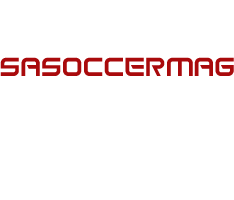Looking at the content, images, page titles and more, Google scans websites to learn about them. The best way to help new visitors find you is with a little push from Google. To ensure your site shows up in search results, you’ll want to invest some time in SEO, otherwise known as search engine optimization. Site structure refers to how you organize your website’s content. It primarily deals with how content is grouped, linked and presented to the visitor. There are way too many sites out there that are simply mistaken with the importance of a site structure.
We discussed the importance of visual on-page assets on your page, now it’s time to examine their technical aspects more closely. On its own, this snippet of code probably isn’t going to have you shooting up SERP rankings. Adding pictures, videos, charts, and other eye-catching visuals makes it more attractive for visitors and improves its appearance in search results. For rapidly evolving topics, keeping your content fresh and providing new value as you learn more about your audience’s needs is critical.
Optimize Old Content For User Intent
This is about ensuring the images on your webpage can be understood when someone can’t view an image and by search engines. Search engines can’t view the images on your pages like your visitors typically would, so they rely on alt text descriptions on your webpage to categorize imagery. This is a page summary that appears under the title tag in SERPs and expands on what the content of your page is. It’s typically limited to 160 characters to fit within the preview on search engines, but can sometimes be calculated in megapixels depending on your preferred search engine.
AIOSEO Schema Types
Read on to explore some of the most relevant facts and figures that show where SEO is in 2025 and where it may be going. Activities like link building and social media marketing are not examples of On Page SEO. Yes, Off-Page SEO, especially building high-quality backlinks, remains a critical factor in SEO success. It’s about fine-tuning the elements on your website to speak the language of search engine algorithms. Now that you know these 13 key product page optimisation strategies, you’re well on your way to increasing traffic to your online store.
There are a lot of tools available to conduct site audits and crawls, such as Screaming Frog and SE Ranking. These tools have the ability to scan your entire website, map out all the URLs, and identify the pages that are not linked to from the other pages of the site. Finding orphan pages on your website is not as complicated as it seems.
- Like every skill, you get better at SEO by practicing on live websites.
- If problems appear, run the specific URL through Schema.org’s markup validator for further guidance.
- You may be thinking that compressing website files is a challenging task, but it’s actually one of the easiest ways to reduce page load time.
- Craft compelling, keyword-rich page titles that accurately reflect the content of each page.
- Think of your target keyword as the designated topic for a particular page.
After they look at your URL, search engines read your site’s titles and descriptions, also known as your meta tags. The title and description are shown in Google search results below each website link, so your site visitors may also read them to determine if your site offers what they want. They are not showing on your website itself – only on result pages. Remember to write unique and descriptive texts for every single page and be sure to incorporate your keywords as much as possible – but again, in a way that sounds natural. SEO Anomaly Examples of on-page SEO include headings and subheadings, internal linking, and images and alt-text. These are all elements on the page that, when optimized, can help your website content rank higher on search engines—and drive more traffic.
